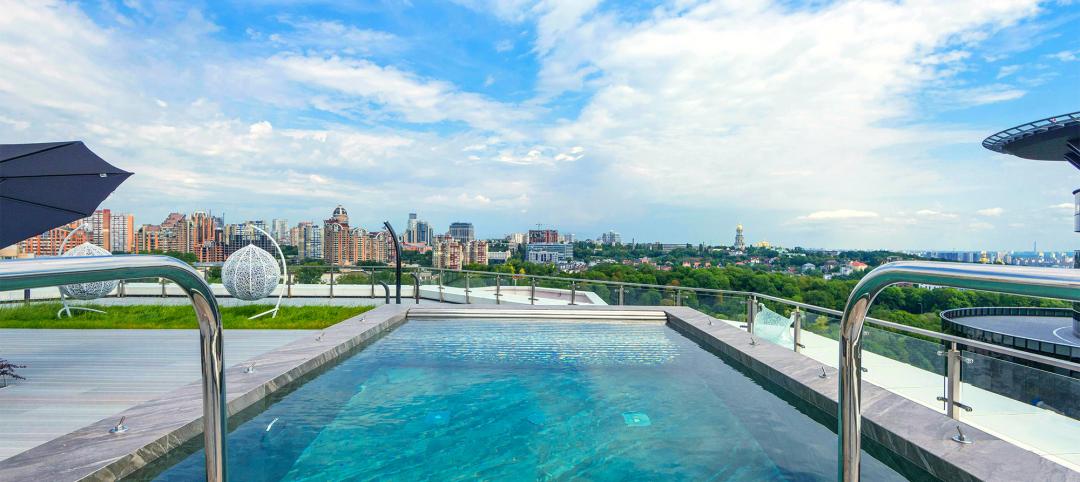The American Institute of Architects (AIA) Upjohn Research Initiative is providing up to $30,000 to five research projects that will advance sustainability in architecture. The purpose of the grant is to provide base funds for research projects that advance architectural knowledge and practice.
Grant recipients were selected by a seven-member jury comprised of members from the AIA College of Fellows and AIA Board Knowledge Committee, and according to the release this year’s selected Upjohn Research Initiative projects include:
Architects and Grid-Interactive Efficient Buildings (GEBs): The Role of the Profession in the Emerging Field of GEBs
Principal Investigator: Deane Evans, FAIA (New Jersey Institute of Technology)
A key goal of the GEBs initiative is to help buildings adapt to and, at the same time, reduce the impacts of climate change. As a collaborative effort between a university-based research center, a state energy-incentive program, and a state AIA component’s Committee on the Environment (COTE), the project intends to better inform architects about GEBs. The results will be incorporated into an online educational toolkit designed to help architects understand the practical, real-world implications of GEBs on their practices.
From Waste to Biodegradable Structures with Local Fungi Species
Principal Investigators: Benay Gürsoy Toykoç, PhD (Penn State); John A. Pecchia, PhD (Penn State); Ali Ghazvinian (Penn State)
Collaborators: Alale Mohseni (Penn State); Natalie Walter (Penn State)
Interest from the architecture community in the sustainable features of mycelium-based materials is growing. As a collaboration among architecture, mushroom science, and computational design, this interdisciplinary research project aims to design and build two large-scale structures, MycoCreateII and MycoPrint, to study the use of mycelium-based composites as a load-bearing material. MycoCreateII will be a fully biodegradable funicular structure with load-bearing components made of mycelium-based composites. MycoPrint will be a shell structure with 3D-printed mycelium-based components cultivated on cardboard and paper waste.
The Future of Green Infrastructure: Measuring and Designing the Built Environment for Pedestrian and Bicycle Activities in Dallas-Fort Worth
Principal Investigators: Hyesun Jeong, PhD, Assoc. AIA (University of Texas at Arlington); Matthew Ables (Arup)
Collaborators: Brian Hammersley (Hammersley Architecture); Meghna Tare (University of Texas at Arlington); Lawrence Agu, Assoc. AIA (City of Dallas)
Using GIS-based data analysis and field study, this research project will investigate how the built environment is conducive to pedestrian and cycling activities in Dallas-Fort Worth. The project team will generate design prototypes and strategies that transform grey-infrastructure into permeable green-infrastructure to envision a more walkable, ecological, and healthier environment in community areas. The outcome of this research and design project may serve as a decision-making tool for stakeholders such as architects, planners, city officials, developers, and community organizations in pursuit of sustainable development, mobility infrastructure planning, stormwater management, and decarbonization efforts.
Priority Green for Community Benefit: A Framework for Tailoring Entitlement Benefits to Neighborhood-specific Priorities Around Climate Change Mitigation, Adaptation, and Equity
Principal Investigator: Adele Houghton, AIA (Biositu)
Local permitting pathways may be more effective levers for mitigating and adapting to climate change, addressing chronic disease, and improving equity if they are tailored to neighborhood-level environmental and human health needs. Generated through a series of charettes, this research project will develop a Priority Green framework that architects can use with local officials to show how building and site design that is responsive to neighborhood environmental exposures, community health risk factors, and the social determinants of health can measurably contribute to advancing their community’s climate action plan and other local public health priorities.
Synergies between Ultra-Low-Energy Buildings, Microgrids, and Direct Current
Principal Investigators: Lisa White (Passive House Institute US (PHIUS)); Graham Wright, PhD (Passive House Institute US (PHIUS))
Collaborator: Walter Grondzik, PE (Ball State University)
This study will assess the feasibility and performance benefits of linking passive building design guidelines with a city-block microgrid, simulated in Milwaukee and composed of 20-30 residential buildings. It will develop an architect’s guide to analyzing and designing such blocks to manifest a resilient, low-emissions future. The goal of this project is to create a template for architects and other design professionals to incorporate both passive building strategies and microgrid design strategies into their projects to achieve optimal carbon performance.
Related Stories
Healthcare Facilities | Jul 16, 2024
Watch on-demand: Key Trends in the Healthcare Facilities Market for 2024-2025
Join the Building Design+Construction editorial team for this on-demand webinar on key trends, innovations, and opportunities in the $65 billion U.S. healthcare buildings market. A panel of healthcare design and construction experts present their latest projects, trends, innovations, opportunities, and data/research on key healthcare facilities sub-sectors. A 2024-2025 U.S. healthcare facilities market outlook is also presented.
Healthcare Facilities | Jul 11, 2024
New download: BD+C's 2024 Healthcare Annual Report
Welcome to Building Design+Construction’s 2024 Healthcare Annual Report. This free 66-page special report is our first-ever “state of the state” update on the $65 billion healthcare construction sector.
Apartments | Jun 25, 2024
10 hardest places to find an apartment in 2024
The challenge of finding an available rental continues to increase for Americans nation-wide. On average, there are eight prospective tenants vying for the same vacant apartment.
MFPRO+ News | Jun 20, 2024
National multifamily outlook: Summer 2024
The multifamily sector continues to be strong in 2024, even when a handful of challenges are present. That is according to the Matrix Multifamily National Report for Summer 2024.
MFPRO+ News | Jun 11, 2024
Rents rise in multifamily housing for May 2024
Multifamily rents rose for the fourth month in a row, according to the May 2024 National Multifamily Report. Up 0.6% year-over-year, the average U.S. asking rent increased by $6 in May, up to $1,733.
Apartments | Jun 4, 2024
Apartment sizes on the rise after decade-long shrinking trend
The average size of new apartments in the U.S. saw substantial growth in 2023, bouncing back to 916 sf after a steep decline the previous year. That is according to a recent RentCafe market insight report released this month.
HVAC | May 28, 2024
Department of Energy unveils resources for deploying heat pumps in commercial buildings
To accelerate adoption of heat pump technology in commercial buildings, the U.S. Department of Energy is offering resources and guidance for stakeholders. DOE aims to help commercial building owners and operators reduce greenhouse gas emissions and operating costs by increasing the adoption of existing and emerging heat pump technologies.
Student Housing | May 28, 2024
Student housing remains strong in May 2024
Although the pace has slowed down this year, student housing preleasing for the 2024–2025 season reached 73.5% in April, 50 basis points year-over-year (YOY).
Mixed-Use | May 22, 2024
Multifamily properties above ground-floor grocers continue to see positive rental premiums
Optimizing land usage is becoming an even bigger priority for developers. In some city centers, many large grocery stores sprawl across valuable land.
Office Buildings | May 20, 2024
10 spaces that are no longer optional to create a great workplace
Amenities are no longer optional. The new role of the office is not only a place to get work done, but to provide a mix of work experiences for employees.

















